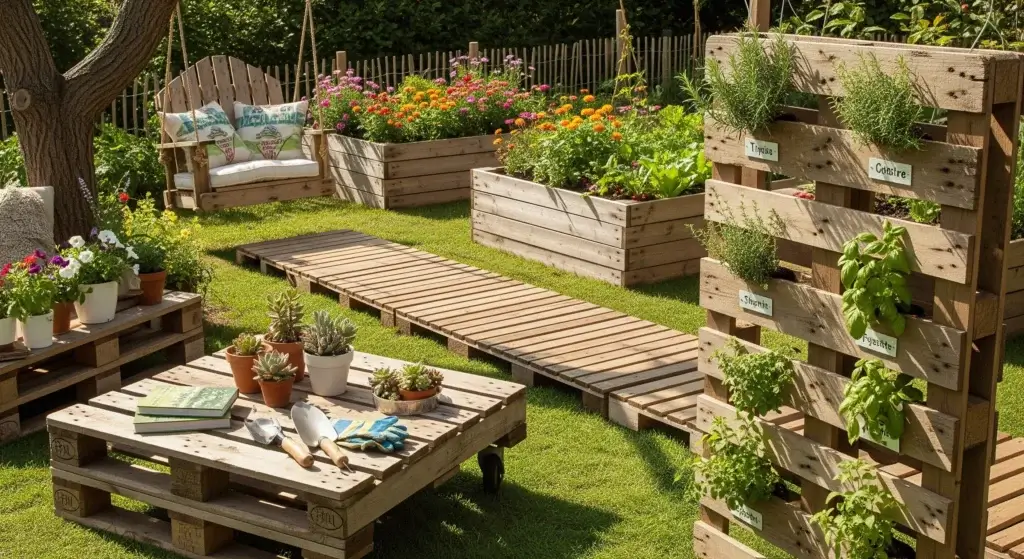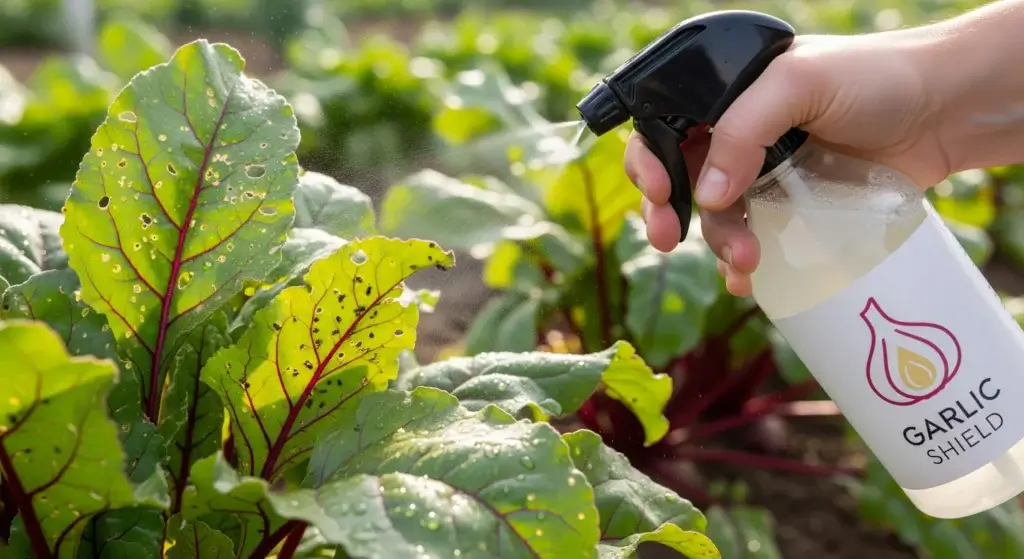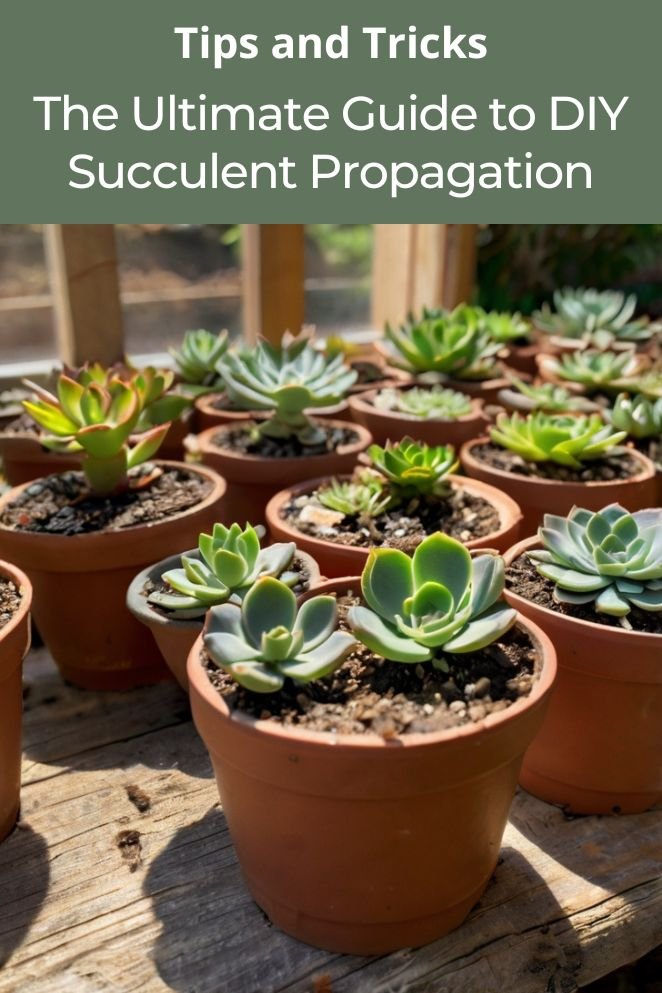
Succulents are incredibly popular for their beauty, low maintenance, and variety of shapes and colors.
One of the most rewarding aspects of owning succulents is propagating them—growing new plants from existing ones.
Whether you’re a seasoned gardener or a beginner, succulent propagation is a fun and easy way to expand your collection.
In this guide, we’ll walk you through everything you need to know about propagating succulents at home.
From essential tools and materials to different propagation methods and care tips, we’ve got you covered!
Essential Tools and Materials
Before you start propagating your succulents, it’s important to have the right tools and materials.
Here’s a list of essentials you’ll need:
- A sharp, clean knife or scissors: This is crucial for making clean cuts that don’t damage the plant.
- Potting mix (specifically formulated for succulents): A specialized succulent or cactus potting mix is ideal as it retains enough moisture without waterlogging the roots.
- Small pots: Choose small, shallow pots with drainage holes for planting your cuttings.
- Perlite or sand: Mixing perlite or sand with your potting mix improves drainage and aeration, which is essential for healthy root development.
- Water: Succulents don’t need much water, but it’s important to keep them hydrated, especially during the initial rooting process.
- Spray bottle: A spray bottle is useful for lightly misting the soil or leaves, ensuring they get just the right amount of moisture without being soaked.
Methods of Succulent Propagation
There are several methods for propagating succulents, each with its unique process.
Here’s a detailed look at the most common methods:
Leaf Cuttings
Leaf cuttings are a simple and effective way to propagate many types of succulents, such as Echeveria, Sedum, and Graptopetalum.
Here’s how to do it:
Choosing the right leaves
Start by selecting healthy, plump leaves from the bottom of the plant.
These leaves should be firm and vibrant, as they are more likely to root successfully.
Avoid using leaves that are damaged, wrinkled, or dry, as these are less likely to take root and grow into new plants.
- Read also: Grow Up in Style: DIY Vertical Succulent Wall Project
- Read also: Unlock Lush Growth: Tips for Caring for Succulents Indoor
Preparing the leaves for propagation
Once you’ve chosen your leaves, gently twist them off the stem.
It’s important to get a clean break, ensuring the entire leaf comes off, as a broken or incomplete leaf is less likely to propagate.
After removing the leaves, let them sit in a shaded area for a few days.
This waiting period allows the cut ends to dry out and form a protective callous, which helps prevent rot when they’re planted.
Planting the leaves
After the leaves have calloused, they’re ready to be planted.
Place them on top of a well-draining potting mix specifically designed for succulents.
There’s no need to bury the leaves—just lay them flat on the soil surface.
The roots will grow from the bottom of the leaf, and the new succulent will emerge from there.
Caring for the leaves until they root
To help the leaves root, keep the soil lightly misted using a spray bottle.
It’s important not to soak the soil, as too much water can cause the leaves to rot.
Also, keep the leaves out of direct sunlight to prevent them from drying out.
Within a few weeks, you’ll start to see tiny roots and small rosettes forming at the base of the leaves.
With patience and proper care, these will eventually grow into new plants.
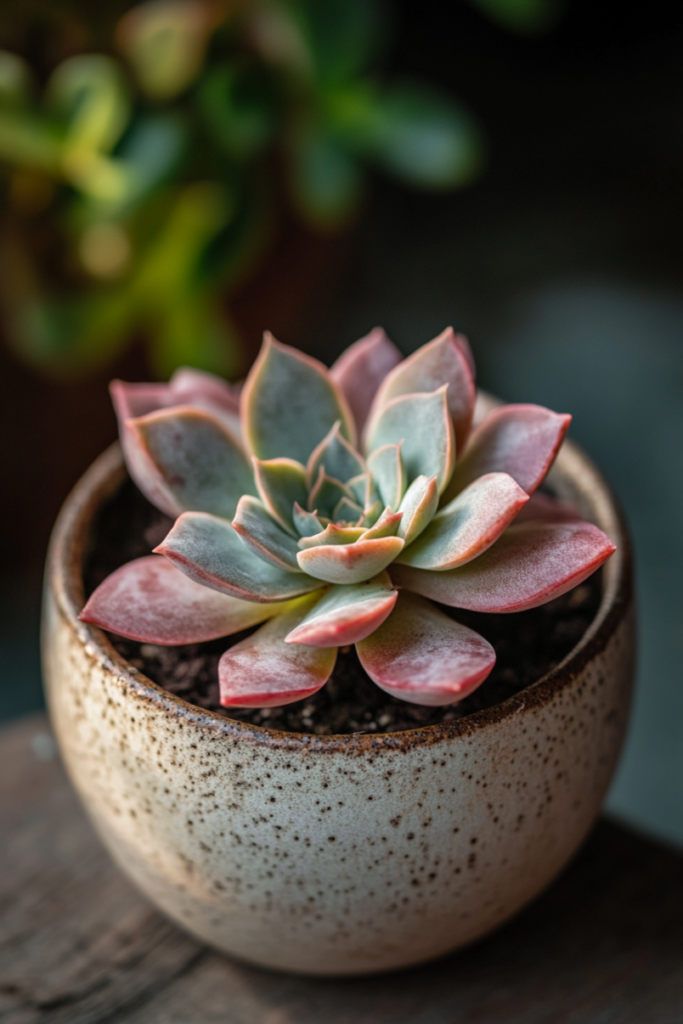
Stem Cuttings
Stem cuttings are another excellent way to propagate succulents, especially for varieties like Aeonium and Crassula.
Here’s how to do it:
Choosing the right stem
Select a healthy stem with several leaves attached.
The stem should be firm and free from any signs of disease or pests.
A strong, healthy stem will have the best chance of rooting and growing into a new plant.
Preparing the stem for propagation
Using a sharp, clean knife or pair of scissors, cut a section of the stem.
It’s crucial to use clean tools to avoid introducing any bacteria or disease to the plant.
After cutting, let the stem dry out for a few days until the cut end forms a callous.
This step is essential to prevent the stem from rotting when it’s planted.
Planting the stem
Once the cut end has calloused, it’s time to plant the stem.
Insert the calloused end into a pot filled with a succulent potting mix.
Make sure the stem is upright and stable in the soil.
The soil should be well-draining to prevent excess moisture, which can lead to rot.
Caring for the stem until it roots
Place the pot in a bright location with indirect light.
Direct sunlight can be too intense at this stage and may cause the cutting to dry out before it has a chance to root.
Water the stem sparingly, allowing the soil to dry out completely between waterings.
With proper care, roots should begin to develop within a few weeks to a couple of months, and eventually, you’ll see new growth emerging.
Offsets
Offsets, also known as “pups,” are small clones that grow at the base of the mother plant.
Propagating from offsets is ideal for succulents like Aloe and Haworthia.
Identifying offsets
Start by looking at the base of your succulent.
If you notice small plants growing around the main plant, these are the offsets.
They may vary in size but are usually quite visible, especially once they’ve developed a few leaves.
These offsets can be carefully separated from the parent plant to grow on their own.
Carefully removing offsets
To remove an offset, you can either use a clean knife or gently do it by hand.
The key is to be gentle and ensure that you remove some roots along with the offset.
This helps the new plant establish itself more quickly. If you’re using a knife, make sure it’s clean to prevent any infection or disease from affecting the plant.
Planting the offsets
Once you’ve removed the offset, plant it in a small pot filled with succulent potting mix.
This type of soil is well-draining, which is essential for succulents.
Make sure the roots are well-covered with soil, but there’s no need to bury the plant deeply—just enough to keep it stable.
Caring for the offsets
After planting, place the pot in a location with bright, indirect light.
Succulents prefer plenty of light, but direct sunlight can be too harsh for young plants.
Water the offset sparingly, just enough to keep the soil slightly moist but not soggy.
With proper care, the offset will establish roots quickly and start growing into a mature plant within a few months.
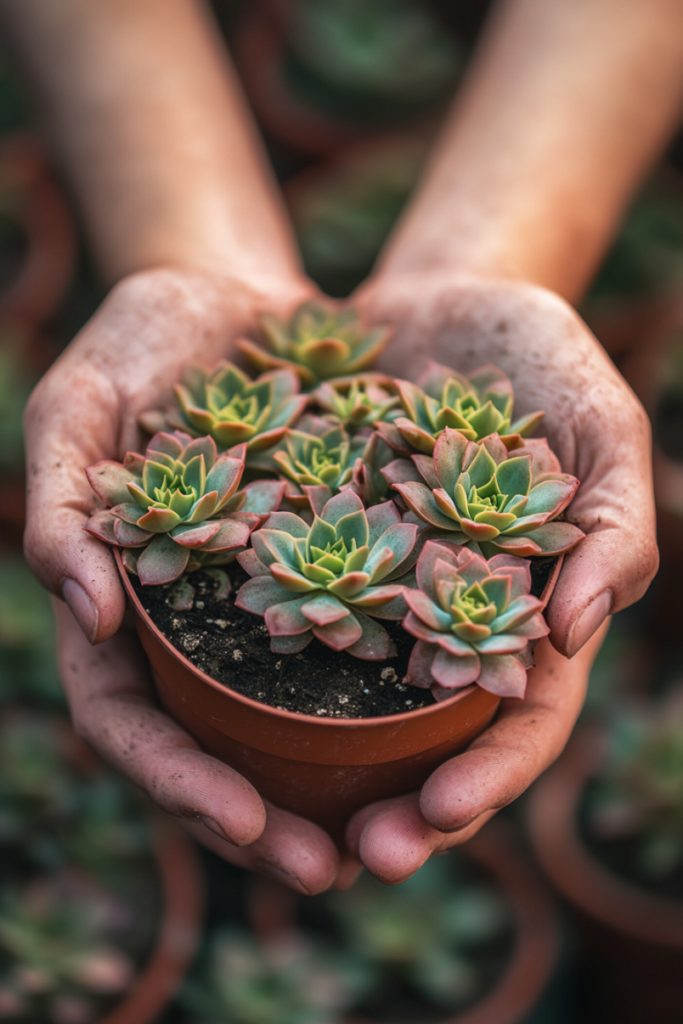
Care Tips for Propagated Succulents
Taking care of propagated succulents requires some attention to detail, but with the right approach, your new plants will thrive.
Here’s how to ensure they grow strong and healthy:
Light
Succulents love sunlight, and they need plenty of it to grow well.
Ideally, your succulents should get about 6-8 hours of bright, indirect sunlight each day.
If you’re growing them indoors and natural light is limited, consider using a grow light to give them the light they need.
Just be cautious with direct sunlight, especially for young plants, as too much can scorch their leaves.
Watering
One of the most common mistakes when caring for succulents is overwatering.
These plants are adapted to dry environments, so they don’t need frequent watering.
It’s crucial to let the soil dry out completely between waterings to prevent root rot.
For young cuttings, you can use a spray bottle to mist the soil lightly, just enough to keep it slightly moist without soaking it.
Soil
Succulents require well-draining soil to prevent water from sitting around their roots.
A soil mix specifically designed for succulents is ideal. You can also improve drainage by adding materials like perlite or sand to the soil.
This ensures that excess water can escape easily, keeping the roots healthy.
Temperature
Succulents thrive in warm temperatures, ideally between 60°F and 80°F (15°C – 27°C).
They can tolerate a bit of fluctuation, but extreme temperatures can be harmful. Avoid exposing them to frost or intense heat.
If you’re growing succulents indoors, be mindful of drafts from windows or doors that could lead to temperature changes.
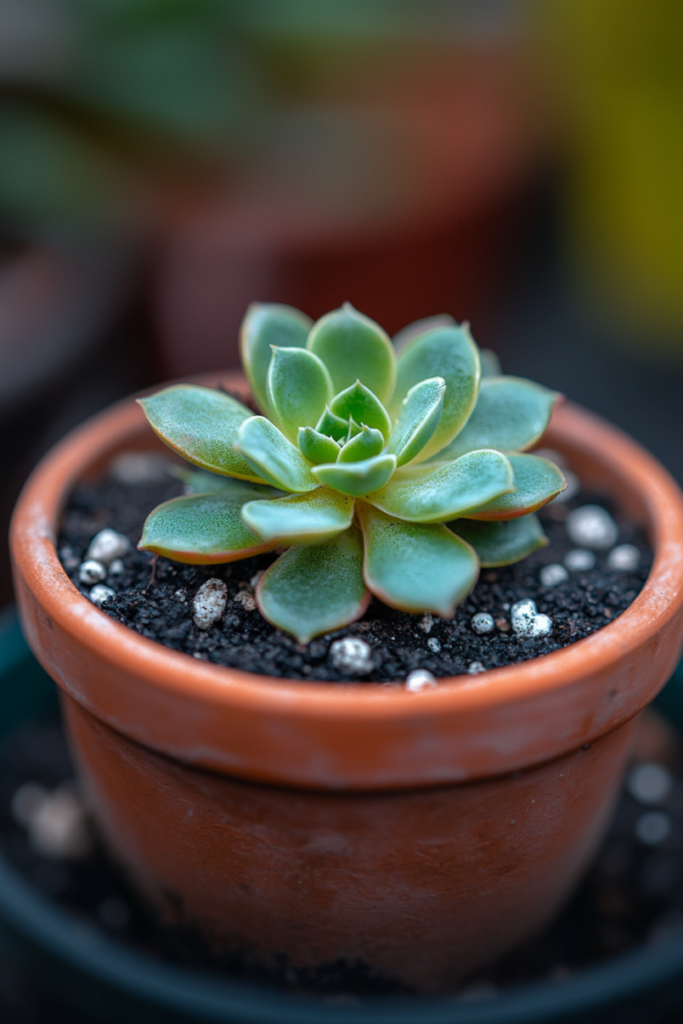
Common Mistakes and Troubleshooting
Even though succulent propagation is generally easy, there are a few common issues that can arise.
Here’s how to avoid and address them:
Overwatering
Too much water is one of the biggest threats to succulents.
Overwatering can cause root rot, which is often fatal to the plant.
To prevent this, always check that the soil is completely dry before you water again.
If you’re unsure, it’s better to wait an extra day or two than to risk overwatering.
Underwatering
While succulents are drought-tolerant, they still need some water to grow.
If you go too long without watering, the leaves may start to shrivel, and growth can slow down.
Make sure the soil doesn’t remain dry for too long—water when it’s dry, but not to the point of neglect.
Improper light conditions
Finding the right balance of light is crucial for succulent health.
Too much direct sunlight can cause the leaves to burn, while too little light can result in “leggy” growth, where the plant stretches out and becomes thin and weak.
Aim for a spot with bright, indirect light, and adjust as needed to keep your succulents looking their best.
Pests and diseases
Succulents are generally low-maintenance, but they can still attract pests like mealybugs and aphids.
Regularly inspect your plants for any signs of pests or disease, such as discolored leaves or sticky residue.
If you notice any issues, act quickly—remove the pests by hand or use a natural insecticide to treat the plant.
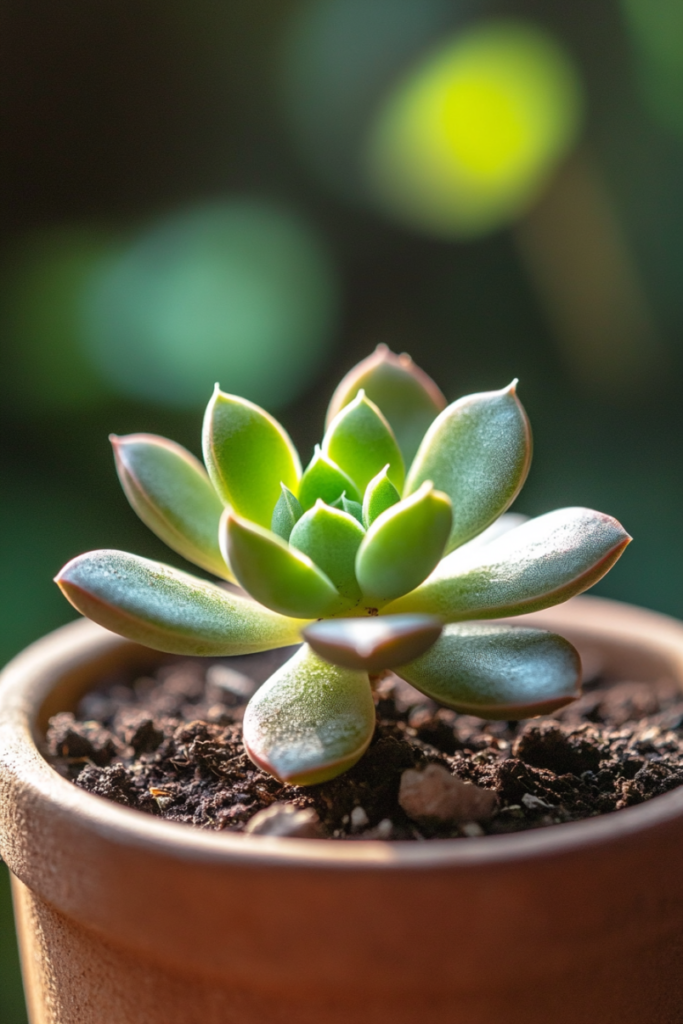
- Read also: Powdery Mildew on Succulents: A Guide to Saving Your Succulents
- Read also: Crafting Your Urban Oasis: DIY Plant Shelf Indoor Ideas
Final Thoughts
Propagating succulents is a fun and rewarding hobby that allows you to grow your collection and share plants with friends and family.
With the right tools, techniques, and care, you’ll find that propagating succulents is easy and enjoyable.
Remember to be patient, as rooting can take time, but the result is worth the wait!
FAQs
Leaf cuttings are often considered the easiest method for propagating succulents, as they require minimal effort and have a high success rate.
The rooting process can take anywhere from a few weeks to a couple of months, depending on the succulent type and environmental conditions.
While some succulents can be propagated in water, it’s generally best to use a well-draining soil mix to prevent root rot.
Spring and early summer are ideal times for propagating succulents, as they are actively growing during this period.
Water your propagated succulents sparingly, only when the soil is completely dry. Overwatering can lead to root rot, so it’s important to let the soil dry out between waterings.


